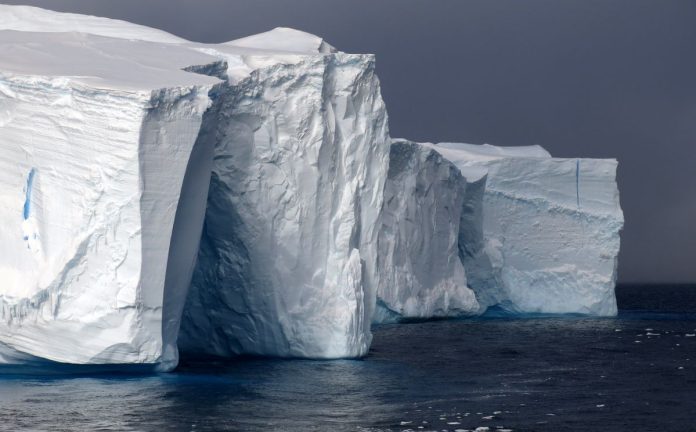
by EH
In a breakthrough study published in Nature Communications, an international research team led by the National Institute of Oceanography and Applied Geophysics (OGS) has uncovered the pivotal role of submarine canyons in the destabilization of the East Antarctic ice sheet. The findings suggest that these geological structures act as conduits for warm water, facilitating the transfer of heat from the deep ocean to the base of the ice sheet, thereby contributing to its melting.
Antarctic canyons are now recognized as key players in the instability of the East Antarctic ice sheet. The study indicates that these canyons channel relatively warm Circumpolar Deep Water from the abyssal zones up to the continental shelf and onward to the ice sheet’s base. This process exacerbates ice melt, posing a significant threat to global sea levels.
“The intrusion of relatively warm waters onto the continental shelf is widely acknowledged as a threat to the Antarctic ice sheet,” said Federica Donda, a marine geologist at the OGS Geophysics Section and the study’s lead author. “Understanding the extent and long-term persistence of this phenomenon is essential for predicting the ice sheet’s response to climate warming.”
The research focused on the Totten and Ninnis glaciers, situated at the mouths of East Antarctica’s Aurora-Sabrina and Wilkes sub-glacial basins. By analyzing geophysical and oceanographic data from an Italian-Australian campaign, the team discovered sedimentary formations, known as sediment drifts, within the canyons. These dome-shaped structures, spanning thousands of meters and varying in thickness from 40 to 80 meters, were formed by bottom currents that transport heat towards the continental shelf.
“This is corroborated by oceanographic data from one of the canyons off the Totten Glacier, where we observed currents at a depth of about 3,500 meters moving at approximately 10 centimeters per second,” Donda explained. “These currents are driven by large, clockwise-rotating vortex systems that transport various water masses, including the warm Circumpolar Deep Water. The canyons, some with reliefs exceeding 700 meters, channel these currents southward, serving as pathways for heat transfer to the continent. The sedimentary bodies suggest this heat transfer has persisted for at least a million years.”
The East Antarctic ice sheet is increasingly under scientific scrutiny due to its potential impact on sea levels. Even partial melting could contribute significantly to global sea level rise. The study’s results underscore the importance of submarine canyons, not only for understanding past and present ice sheet dynamics but also for predicting future sea level changes.
This extensive research project brought together scientists from the OGS, the University of Southampton, Rutgers State University of New Jersey, Colgate University, Geoscience Australia, the All-Russia Scientific Research Institute for Geology, the Mineral Resources of the Ocean, St. Petersburg State University, the University of Tasmania, and Macquarie University.
As the world grapples with the implications of climate change, studies like this highlight the intricate and often unexpected ways in which geological and oceanographic processes can influence the future of our planet.




























